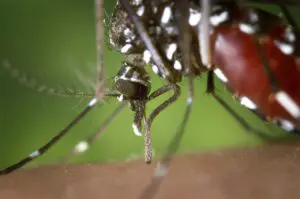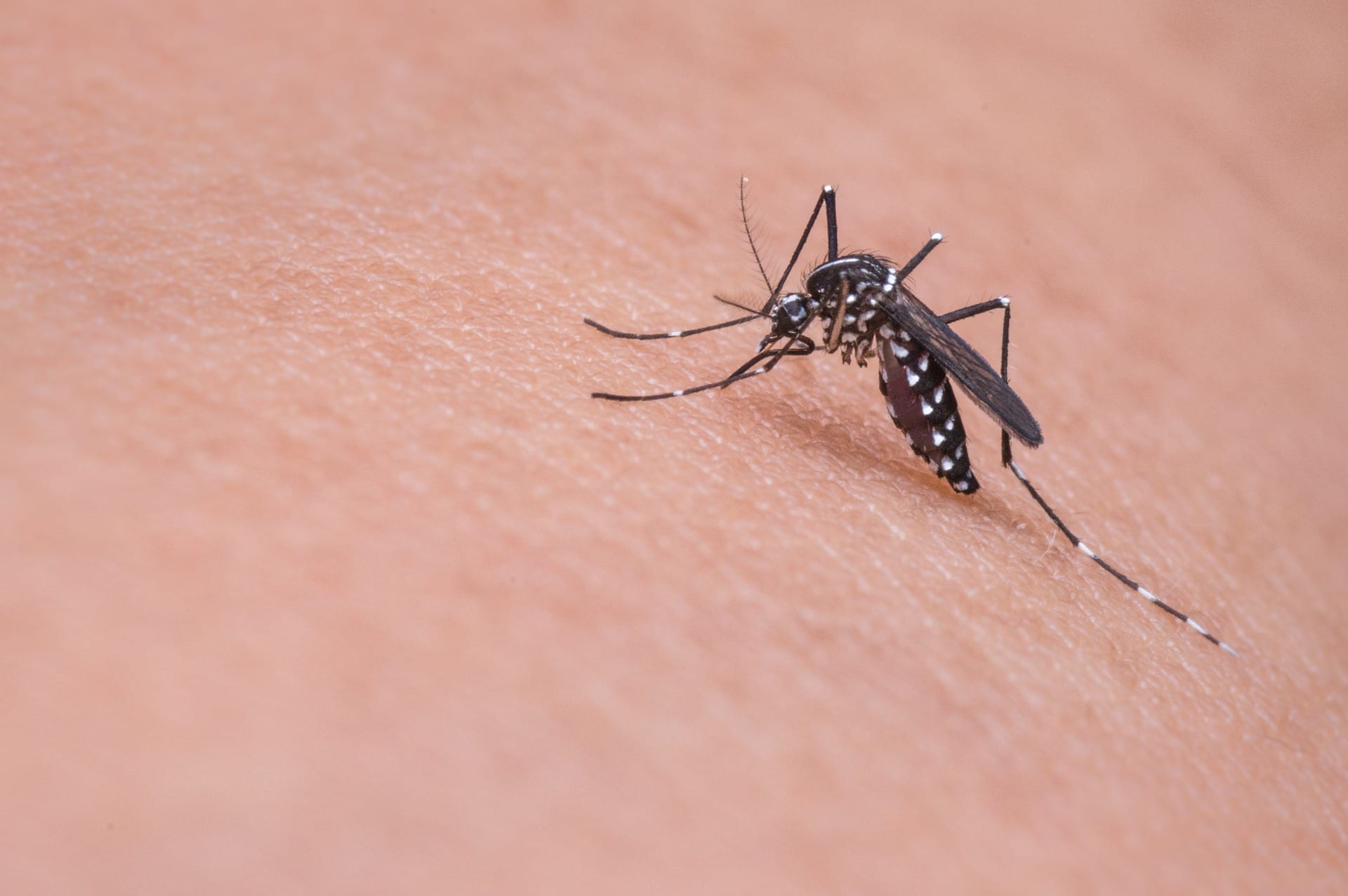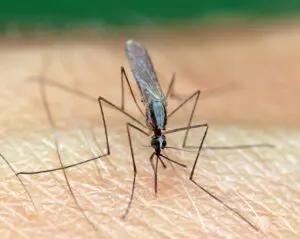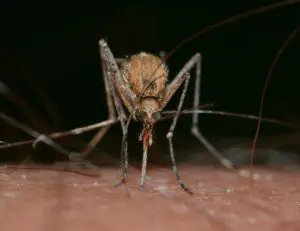

How to look for signs of mosquitoes
As the leader in pest control, Excel Pest Services understands the importance of identifying signs of mosquito infestation in homes to provide effective solutions. Recognizing these signs early can help homeowners take proactive measures to prevent mosquito infestation and protect their families from potential health risks.
Mosquitoes or Relatives: It's crucial to differentiate between mosquitoes and their look-alike relatives. While mosquitoes can transmit diseases, their relatives generally cannot. Look for slender bodies, long legs, and prominent proboscis to identify mosquitoes accurately.
Temperature and Humidity: Monitoring temperature and humidity levels is essential in assessing the risk of mosquito infestation. Mosquitoes thrive in warm climates and are most active during temperatures of 80 degrees and above. We recommend keeping track of these conditions to anticipate and prevent mosquito infestation.
Active Hours: Understanding mosquitoes' peak activity hours helps homeowners identify potential infestations. Dawn and dusk are prime times for mosquito activity, and it's important for homeowners to be vigilant during these periods.
Consistent Buzzing: Consistent buzzing noise indicates a large number of mosquitoes nearby, signaling a possible infestation.
Numerous Bites: Frequent mosquito bites can indicate a current or impending infestation. Taking action to prevent bites is essential in controlling mosquito infestations.
By recognizing these signs and seeking professional assistance from Excel Pest Services, homeowners can effectively combat mosquito infestations and enjoy a mosquito-free environment.
Mosquito Infestation in Home: Identifying Areas and Consequences
Identifying areas within homes prone to mosquito infestation is crucial for effective pest management. Common breeding grounds include stagnant water sources such as birdbaths, flower pots, and clogged gutters. Areas with poor ventilation or high humidity levels, like basements and bathrooms, also provide favorable conditions for mosquito breeding. Failure to address these areas promptly can lead to a significant increase in mosquito populations within the home.
The consequences of a mosquito infestation in home can extend beyond mere annoyance. Mosquitoes are vectors for various diseases, including West Nile Virus and Zika Virus, posing a significant health risk to occupants. Incessant mosquito bites can also significantly disrupt sleep and outdoor activities, affecting the overall quality of life for homeowners.
To effectively manage mosquito infestations in homes, it's essential to seek assistance from professional pest control companies like Excel Pest Services. Our team of experts employs tailored strategies and Integrated Pest Management Solutions to identify and eliminate mosquito breeding sites, effectively reducing populations and minimizing the risk of disease transmission.
With our comprehensive approach to pest management, homeowners can enjoy peace of mind knowing their homes are protected from mosquito infestations.
Mosquito infestation in yard
Addressing mosquito infestation in yards presents unique challenges due to the abundance of outdoor spaces and potential breeding grounds. Standing water, such as puddles, bird baths, and clogged gutters, provides ideal conditions for mosquitoes to lay eggs and multiply rapidly. Lush vegetation and shaded areas also offer shelter and resting spots for adult mosquitoes, further exacerbating the problem.
To combat mosquito infestations in yards, homeowners must adopt a comprehensive approach that targets both breeding sites and adult mosquitoes. Regularly inspecting and eliminating standing water sources is paramount in disrupting the mosquito life cycle and reducing populations. This includes properly maintaining gutters, filling in low-lying areas, and ensuring that containers are emptied or covered to prevent water accumulation.
Implementing landscaping strategies aimed at reducing mosquito habitat can also be effective. Trimming overgrown vegetation, mowing the lawn regularly, and removing debris can limit resting areas for mosquitoes and make the yard less hospitable to them.
Employing barrier treatments and mosquito-repelling plants is also an effective strategy as it provides additional protection against mosquito infestations in yards. These proactive measures create a hostile environment for mosquitoes, reducing their presence and minimizing the risk of bites.
For homeowners facing persistent mosquito infestations in yards, seeking professional assistance from pest control experts like Excel Pest Services is advisable. Our team utilizes specialized techniques and treatments to target mosquitoes at every stage of their life cycle, ensuring long-term relief from mosquito infestations and allowing homeowners to enjoy their outdoor spaces without fear of bites or disease transmission.
Mosquito prevention tips
Besides being a major nuisance, mosquitoes can be quite dangerous. They are known to carry and spread many human diseases, including West Nile Virus, encephalitis, and zika virus. For that reason, mosquito infestations should be avoided at all costs.
To stop mosquito infestations there are certain precautions that should be taken. The following checklist can be used to minimize your risk of an infestation around the house and businesses.
Top 7 Mosquito Prevention Tips
1. Remove Stagnant Water Sources
Stagnant water serves as a breeding ground for mosquitoes. To minimize the risk of mosquito infestations, remove any sources of stagnant water around your home. This includes emptying cans, buckets, ceramic pots, and other containers that can hold water. Additionally, remember to turn over wheelbarrows and wading pools when not in use to prevent water accumulation.
2. Maintain Birdbaths
Birdbaths can attract mosquitoes if water stagnates in them. Change the water regularly, ideally daily, to prevent mosquito breeding. Emptying birdbaths in the evening is advisable, as most birds sleep at night, and mosquitoes are more active during this time.
3. Ensure Proper Drainage in Outdoor Containers
Outdoor garbage and recycling containers should have drainage holes in the bottom to prevent the collection of rainwater or other liquids. Additionally, keep lids on these containers to avoid attracting mosquitoes seeking food sources.
4. Clean Gutters Regularly
Clogged gutters can trap water, providing an ideal environment for mosquitoes to breed. Clean gutters at least once a year, especially if surrounding trees shed leaves that may clog them.
5. Maintain Swimming Pools
Proper maintenance of swimming pools is essential in preventing mosquito infestations. Clean and chlorinate pools regularly to deter mosquitoes from laying eggs. Remove any water that collects on pool covers frequently to eliminate potential breeding sites.
6. Manage Ornamental Pools
Aerating ornamental pools or stocking them with fish can help prevent mosquitoes from laying eggs in the water. These measures disrupt the mosquito life cycle and reduce the likelihood of mosquito infestations.
7. Landscaping with Mosquito-Repellent Plants
Incorporate plants and herbs known to naturally repel mosquitoes into your landscaping. Species such as citronella, lavender, marigold, and peppermint can discourage mosquitoes from settling in your yard, reducing the risk of mosquito infestations.
By following these comprehensive mosquito prevention measures, you can minimize the risk of mosquito infestations around your home and ensure a safer, more enjoyable outdoor environment for you and your family during spring and summer. Early identification and proactive prevention are key to mitigating the nuisance and potential health risks associated with mosquitoes.
How to Get Rid of a Mosquito Infestation
Facing a mosquito infestation can be daunting, but Excel Pest Services is here to help with tailored solutions. Here's how we can assist in effectively eliminating mosquito infestations in various settings:
- Assessment and Inspection: Our skilled technicians will conduct a thorough assessment of your property to identify breeding sites and areas of mosquito activity.
- Targeted Treatment: Using safe and effective methods, we'll target mosquito larvae and adults, applying larvicides to breeding sites and utilizing insecticides to control adult populations.
- Strategic Placement of Traps: Excel Pest Services strategically places mosquito traps in key areas to attract, capture and remove adult mosquitoes, reducing their numbers and preventing further infestation.
- Barrier Treatments: We apply barrier treatments to outdoor spaces, creating a protective shield against mosquitoes and minimizing their presence around your home or business.
- Continuous Monitoring: Our team provides ongoing monitoring and maintenance to ensure long-term relief from mosquito infestations, adjusting treatment plans as needed to address any resurgence.
- Professional Expertise: With years of experience and expertise in pest control, Excel Pest Services delivers effective solutions tailored to your specific needs, providing peace of mind and reliable protection against mosquitoes.
By partnering with Excel Pest Services, you can trust that your mosquito prevention needs are in capable hands. Let us help you reclaim your space and enjoy a mosquito-free environment.
In Conclusion
With Excel Pest Services, you have a trusted partner in effective mosquito pest control. Our tailored solutions and expert techniques ensure that your home or business is free from the nuisance and potential health risks associated with mosquitoes.
From thorough assessments to targeted treatments and continuous monitoring, we're dedicated to providing long-term relief and protection. Take proactive steps today to eliminate mosquito infestations and create a safer, more comfortable environment for you and your loved ones.
Contact us now to schedule your consultation.
FAQ:
If you're dealing with a mosquito infestation, it's essential to take action immediately.Seeking professional pest control services, like Excel Pest Services, can also provide tailored solutions to effectively eradicate the infestation.
What causes infestation of mosquitoes?
Mosquito infestations are typically caused by conducive environmental conditions and the availability of suitable breeding sites. Stagnant water sources, such as puddles, birdbaths, and clogged gutters, provide ideal breeding grounds for mosquitoes. High humidity levels and warm temperatures also contribute to increased mosquito activity and reproduction.
Why are there so many mosquitoes suddenly?
Sudden increases in mosquito populations can be attributed to various factors, including weather conditions, seasonal changes, and environmental factors. Warm and humid weather accelerates mosquito breeding cycles, leading to a surge in population numbers. Changes in rainfall patterns or the introduction of new breeding sites can also result in sudden spikes in mosquito activity.
Will mosquitoes eventually stop biting me?
While mosquito activity may decrease during cooler months or in drier conditions, they will continue to bite as long as suitable hosts are available. Mosquitoes require blood meals to nourish themselves and develop eggs, so they will seek out humans and animals for feeding. Implementing effective mosquito prevention measures and seeking professional pest control services can help minimize bites and reduce mosquito populations in your area.





